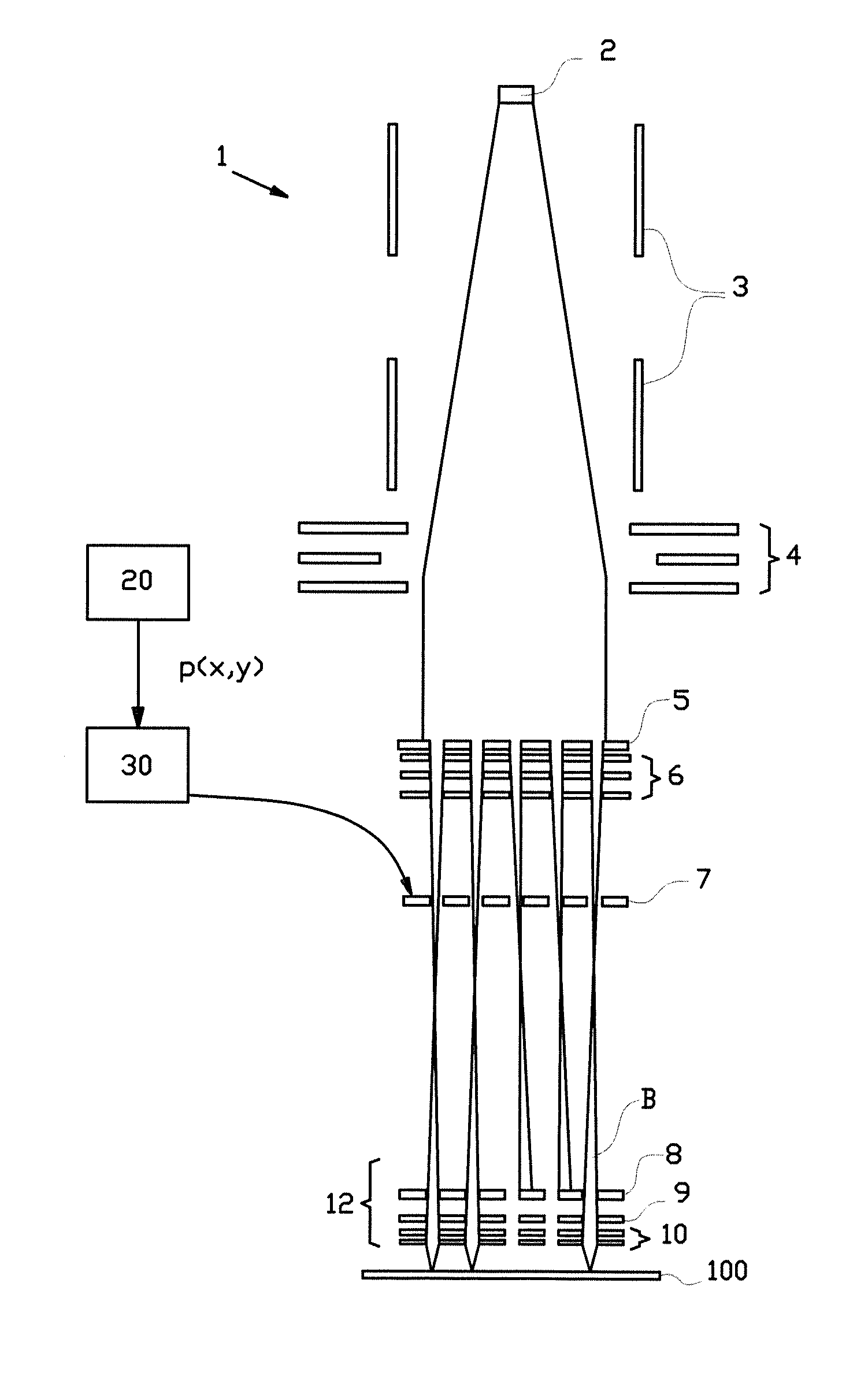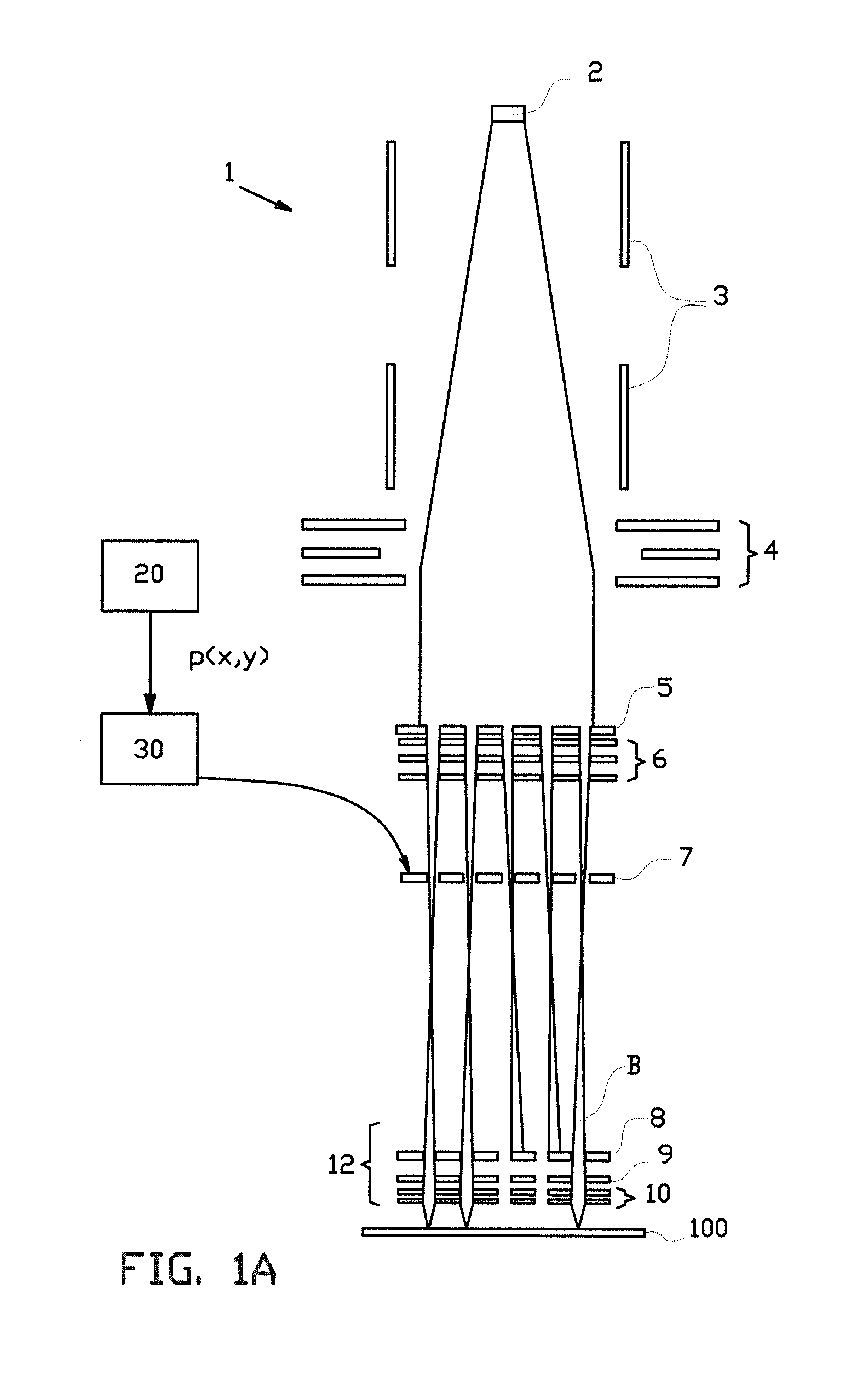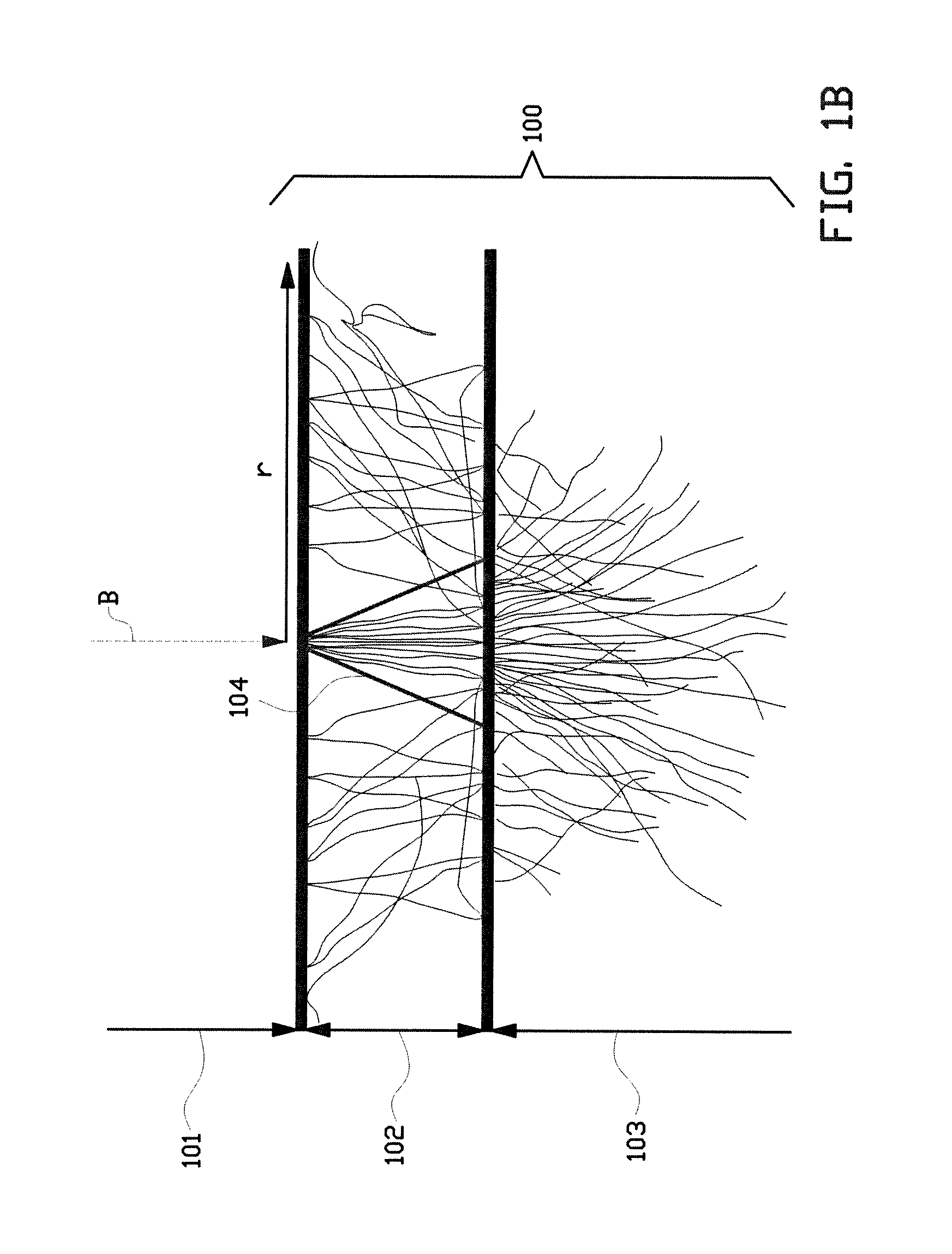Proximity effect correction in a charged particle lithography system
a lithography system and proximity effect technology, applied in the field of proximity effect correction, can solve the problems of numerical instability of conventional methods for numerically approximating corrected layout patterns, inability to determine the correct layout pattern analytically from the exposed pattern and the base proximity effect function, and inability to accurately calculate high frequency components
- Summary
- Abstract
- Description
- Claims
- Application Information
AI Technical Summary
Benefits of technology
Problems solved by technology
Method used
Image
Examples
Embodiment Construction
[0088]FIG. 1A schematically shows a multi-beamlet charged particle lithography system 1 according to the present invention. The system comprises a charged particle beam source 2 which emits a charged particle beam which traverses a double octopole 3 and collimator lens 4 before impinging on an aperture array 5. The aperture array then splits the beam into a multitude of charged particle beams which are condensed by condenser array 6. At beam blanker array 7 individual beams may be blanked, i.e. may be deflected such that they encounter beam stop array 8 later on in their trajectories instead of passing through apertures in beam stop array 8. An electronic processor 30 is arranged for receiving, from a digital storage 20, a digital layout p(x,y) of a pattern to be transferred to the target, and for calculating a corrected layout pattern which compensates at least partially for the proximity effect as described in more detail below. The electronic processor comprises a controller whic...
PUM
 Login to View More
Login to View More Abstract
Description
Claims
Application Information
 Login to View More
Login to View More - R&D
- Intellectual Property
- Life Sciences
- Materials
- Tech Scout
- Unparalleled Data Quality
- Higher Quality Content
- 60% Fewer Hallucinations
Browse by: Latest US Patents, China's latest patents, Technical Efficacy Thesaurus, Application Domain, Technology Topic, Popular Technical Reports.
© 2025 PatSnap. All rights reserved.Legal|Privacy policy|Modern Slavery Act Transparency Statement|Sitemap|About US| Contact US: help@patsnap.com



